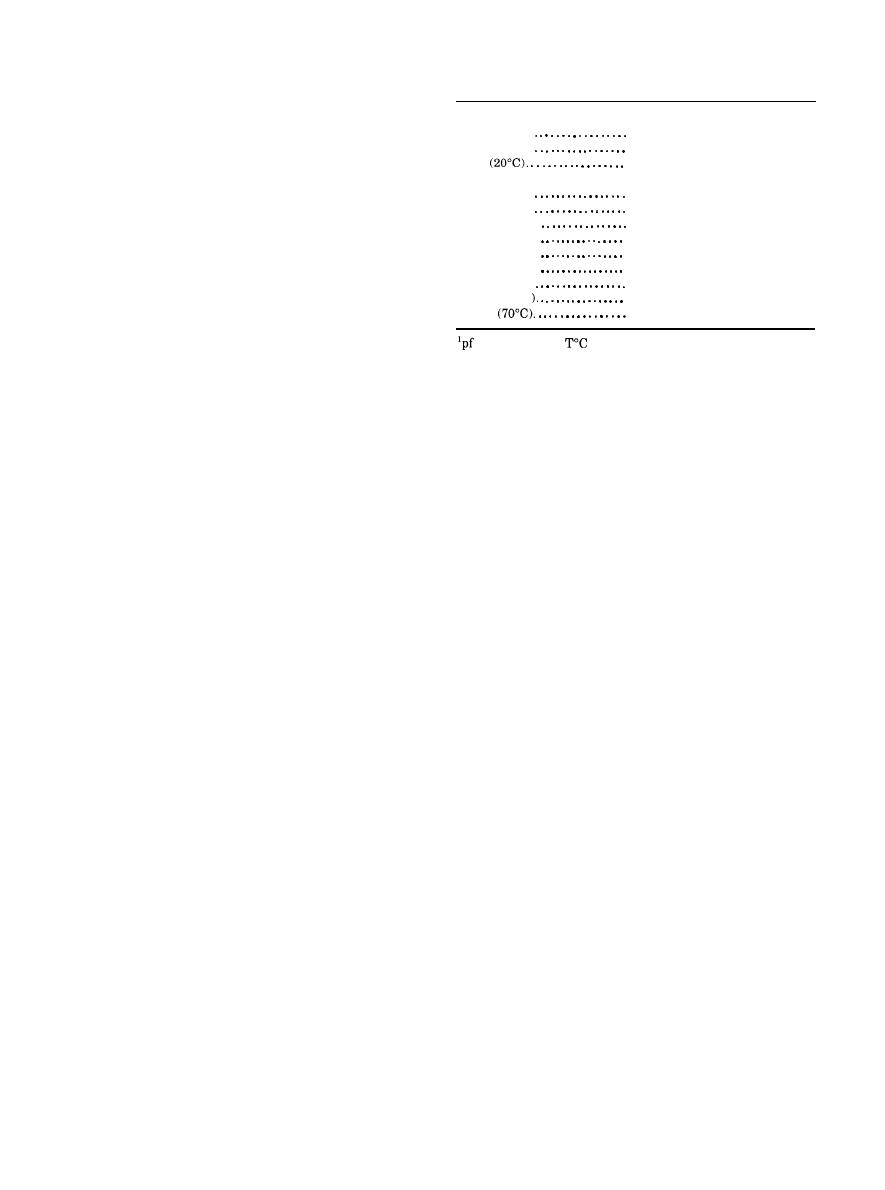

Custom Search
|
|

|
||
 TM 5-684/NAVFAC MO-200/AFJMAN 32-1082
thereafter. For convenience, it is well to schedule
Table 3-3. Temperature correction factors for power factor1
such tests to correspond to those applied to other
Temperature
Correction factor (K)
equipment at a given location. In this way, the test
50F (10C).
1.25
equipment and personnel may be used to the best
59F (15C).
1.11
advantage.
68F
1.00
77F (25C). . . . . . . . . . . . . . . . . .
0.89
b. Equipment. Insulation power factor can be
86F (30C).
0.80
measured by several methods, including the
95F (35C).
0.71
voltmeter-ammeter-wattmeter (Doble) method and
104F (40C).
0.65
the balanced bridge method. A number of power
113F (45C).
0.57
122F (50C).
0.51
factor test bridges are available and are probably
131F (55C).
0.46
the most convenient way to measure the power fac-
140F (60C
0.41
tor. Commonly used circuits are described in ASTM
149F (65C
0.37
D 150. Further information is available in IEEE 62.
158F
0.33
c. Test personnel. Power factor testing involves
at 20C = pf at
xK
high voltages and fine measurements. Test person-
nel should be well trained and highly skilled in the
bushing must then be disconnected at both termi-
operation of the test set being used. For safety, two
nals and tested separately.
people should be used to conduct the test.
(2) A consistent test procedure should be fol-
d. Test conditions. To obtain the most reliable re-
lowed on a given piece of equipment in order to
sults, power factor testing should be conducted un-
satisfactorily establish a trend. Power factor test
der the following conditions:
values of a bushing individually tested, for example,
(1) If outdoors, the weather should be fairly
cannot be directly compared to test values obtained
clear.
when a bushing is connected to a winding or a bus.
(2) Air temperature should be above 40 degrees
F (5 degrees C). Power factor tests have little value
f. Ungrounded specimen test. Power factor of a
when made at freezing temperatures.
bushing may be determined by attaching the high-
voltage lead of the test set to the top terminal of the
(3) Relative humidity should be less than a
bushing and the low-voltage lead to the capacitance
maximum of 80 percent.
or power factor test tap (if the bushing has one) as
(4) Insulation being tested should be dry and
shown in figure 3-l. The bushing flange is then
clean.
grounded to the test set and power factor measure-
(5) Insulation temperature must be known and
ments made.
should not be less than the air temperature; other-
(1) Record temperature of bushing. Connec-
wise, condensation will take place and hot-collar
tions to the bus at the bushing need not be removed
losses will be high because of surface leakage. Tem-
unless such connections seriously affect the read-
perature may be measured with a thermometer in
ings. Experience in making measurements will fa-
contact with the porcelain.
cilitate making a decision in this regard.
(6) Current leakage by creepage along insula-
(2) Some bushings not provided with either a
tion surfaces should be eliminated by the applica-
capacitance or power factor test tap may be tested
tion of the proper guard circuit of the tester. Guard
essentially in the same manner, if provisions for
circuits vary with testers of different types, and the
isolating the bushing flange from the grounded ap-
manufacturer's recommendations should be fol-
paratus tank are present. Under such circum-
lowed.
stances, with the bushing flange grounded, the low-
e. Test comparisons. In order to yield better re-
voltage lead of the test set is connected to the
sults that can be compared, power factor tests on
bushing flange and the test set is grounded to the
the same item should be made at the same voltage
apparatus tank.
and frequency. Measurements at different tempera-
g. Grounded specimen test. Where bushings to be
tures should be corrected to 68 degrees F (20 de-
tested have fixed conductors and are not equipped
grees C) to facilitate comparisons and establish-
with facilities for making the ungrounded specimen
ment of a power factor trend. See table 3-3 for
test, the power factor may be measured in the fol-
correction factors.
lowing manner:
(1) Power factor is a "worst condition" value,
(1) Remove top and bottom connections to
and it is necessary to isolate bushings from the rest
bushing.
of the equipment being tested only if the test indi-
cates trouble. In such a case, each item must be
(2) If the bushing cannot be removed, the bush-
tested separately to determine which is failing; a
ing flange must be insulated from the apparatus.
3-11
|
 |
|
 |
||